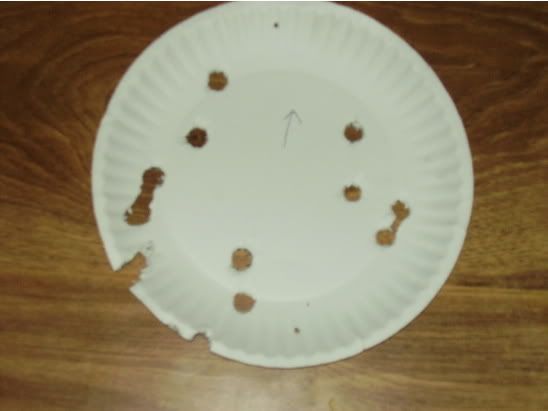I went out this morning to run a few balls thru my .58 French fusil and the pic below is the resuklt at 45 yds shooting from a position of leaning against the canopy of my PU while standing, the paper plate is 9" across, it is not a real formidable group but when considering the loads it is not to bad the first shot was the standard huntuing load of 85 gr 3f, 3f prime with a 5/64 vent, no liner, with an over powder card and a .562 ball in a .012 patch, then I used a .570 ball with the same powder and an over powder card then an over shot card to hold the ball in place, then I used a .550 ball with the same powder and patch, then a .535 ball with the same powder and patch, then a .550 ball with tow above and under it with the same powder load, also used the .535 ball with tow and wasp nest for wadding nearly every shot was a different ball size or wadding combo all powder charges were the same, I did not walk back and forth with each shot but may sometime to record any patterns that may show up.I am sure that the original combo would have tightened up the group but this shows how forgiving a smoothbore can be, and explains why in the early 18th century balls were often packed in barrels with balls of .54..55 and .56 and similar lots and why the bore size varied so much and still be considered a gun of xnumber of balls to the lb. I can feed this thing most anything and hit minute of deer or man at 45-50 yds if I were a child of the past, this is probably not accurate enough for most target shooters here but does shed some light on the historical useage of smoothbores and ball sizes.








